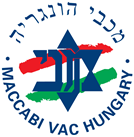Shavuot and the chain of Jewish continuity
Dear friends,
Shavuot, for all its various themes and names[1], is mainly the Festival of our Receiving the Torah – the Book that made us the People we are. According to rabbinical description, on the 6th of Sivan more than 3300 years ago, the Kadosh Baruch Hu gave us the Written Torah (what we call the 5 Books of Moses) and the Oral Torah (an encyclopedic compendium of stories, laws and narrations included in the Talmud, the Midrash and ancient Rabbinical Literature in general).
Our Sages wanted to illustrate how the process of the Torah, especially of the Oral Torah, was transmitted. If the Oral Torah was handed down at Mt Sinai, like the Written Torah, its divine authority must be the same – having both the Written and Oral Torah the same source, God Himself. A very simple but beautiful text was written to affirm this assertion. The first Mishnah of Pirkei Avot – the book that defines many of our Sages’ basic beliefs and thoughts – describes it thus:
“Moses received the Torah from Sinai and transmitted it to Joshua; Joshua to the elders; the elders to the prophets; and the prophets handed it down to the men of the Great Assembly. They said three things: Be deliberate in judgment, raise up many disciples, and make a fence around the Torah.”[2]
The process started with God giving the Torah to Moshe Rabeinu – Moses – the most outstanding Jewish leader of all times… and from there it became the responsibility of our leaders to transmit it from generation to generation: the Great Assembly transmitted it to one of its last survivors, Shimon HaTzaddik; he did the same to Antigonus of Socho; Antigonus gave it to Yosi ben Yoezer of Tzeredah and Yosi ben Yochanan of Jerusalem, and so on, passing the Oral transmission through to the generation of the great Hillel and Shammai. The chain of transmission continued, to bless us with the wonders of the Torah and its exegesis.
Besides the theological purpose of showing the divine origin of Oral law, our Sages sought to achieve an additional and no less important goal with their description of the long chain of Torah transmission. This aim is already stated in the same Mishnah we quoted, “raise up many disciples”.
It points to the fact that the only way to make our Torah a living source for a living people is through an uninterrupted process of students-becoming-teachers, making studying, teaching and sharing the Torah one of the great pillars of Jewish Continuity. This aim was vital for the continuity of Jewish existence, especially during times when we lost our national land, and especially after our expulsion at the hands of the Romans from the Land of Israel after the destruction of our Second Jewish Commonwealth.
Where are we in this process? How do we contribute to the Torah-Judaism-Zionism chain of transmission? Today, when we live in one of the most fortunate and blessed times of our history as a People, having the State of Israel, a promising future and plenty of challenges for our growth and strengthening… Are we in any way students/teachers of the great river of our Zionist-Jewish heritage? Are we aware of our responsibility to be the source of Jewish-Zionist learning for the next generation?
Our Sages never expected that every one of us would be new Rabbi Akivas in each generation – though every generation has its own great scholars and spiritual leaders – but they did expect each of us to be at least one conscious and committed link in the chain of Jewish Continuity. If we are not that link… then the chain is broken, and part of our future as a Jewish People is lost. Interestingly, when we speak in Hebrew of a great Jewish scholar, we call him a “talmid chacham”, “a wise student”: God expects of us to dedicate only part of our time to deepen our roots, and to share this treasure, to be generous to our successor generations
Shavuot celebrates Torah. Let us celebrate the living Torah, Judaism, Zionist commitment and the chain of transmission for our own sakes, and for the Jewish-Zionist future of our children.
Chag Shavuot Sameach!
Chazak ve’ematz!
RABBI CARLOS A. TAPIERO
Deputy Director-General & Director of Education
Maccabi World Union
[1]Chag Hashavuot (the Celebration of the Weeks); Chag Hakatsir (the Harvest Festival); Yom Habicurim (the Day of the First Fruits); Atzeret(the Conclusion), and Zman Matan Torateinu (the time of the giving of our Torah).
[2]Mishnah Avot 1,1.















